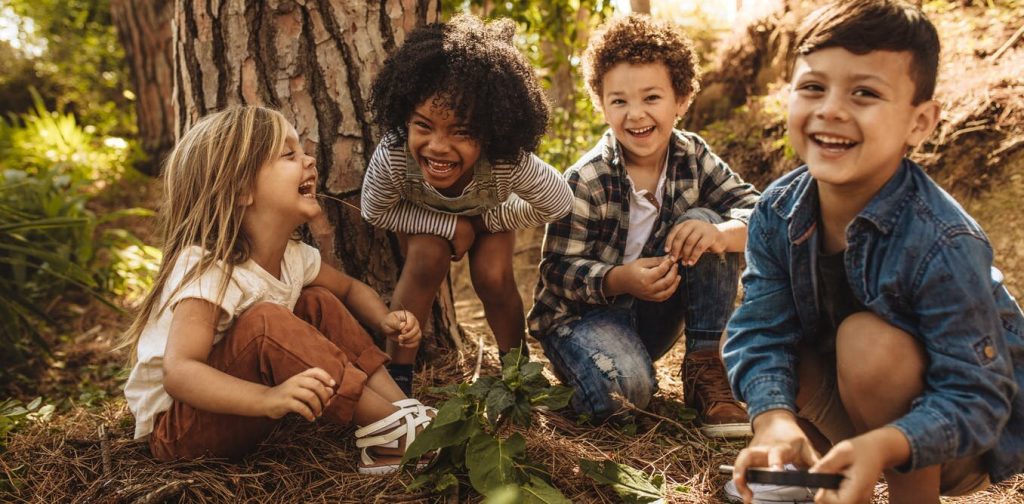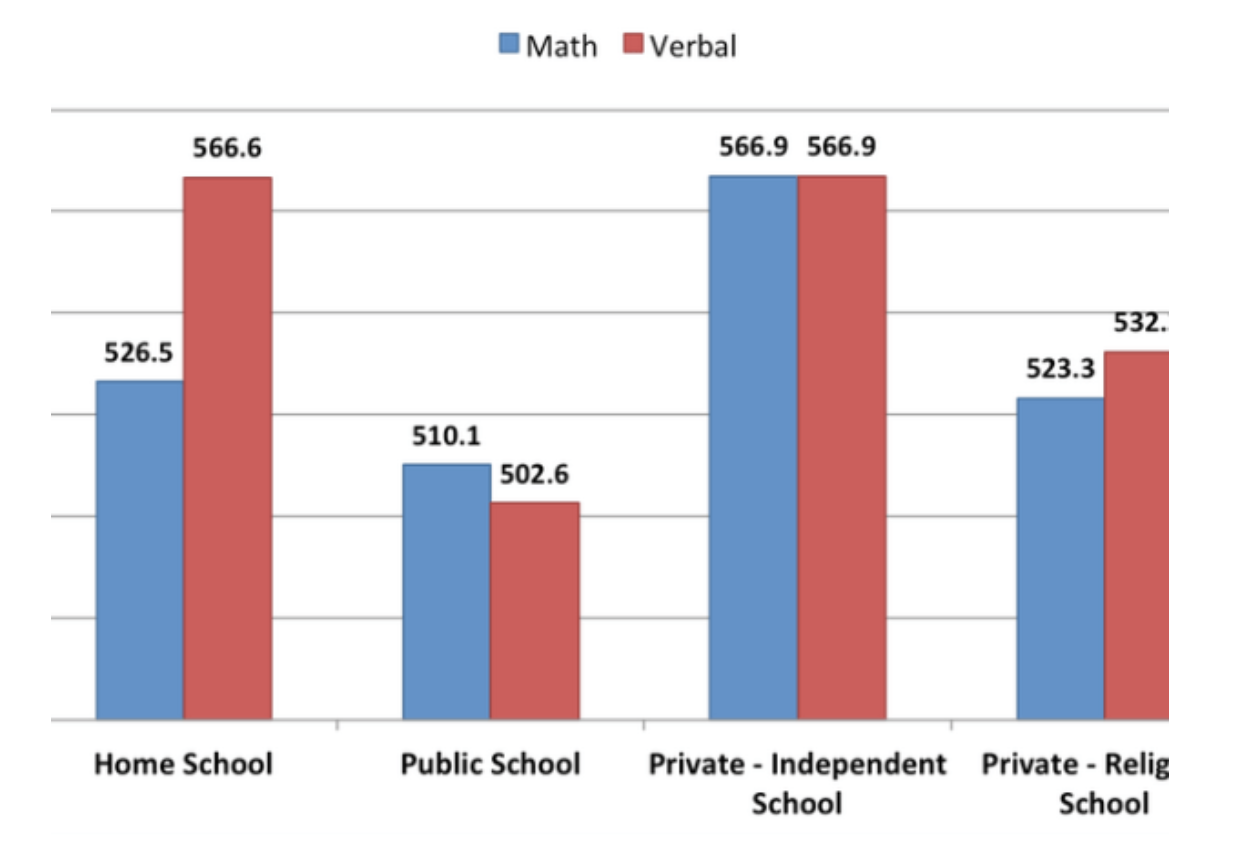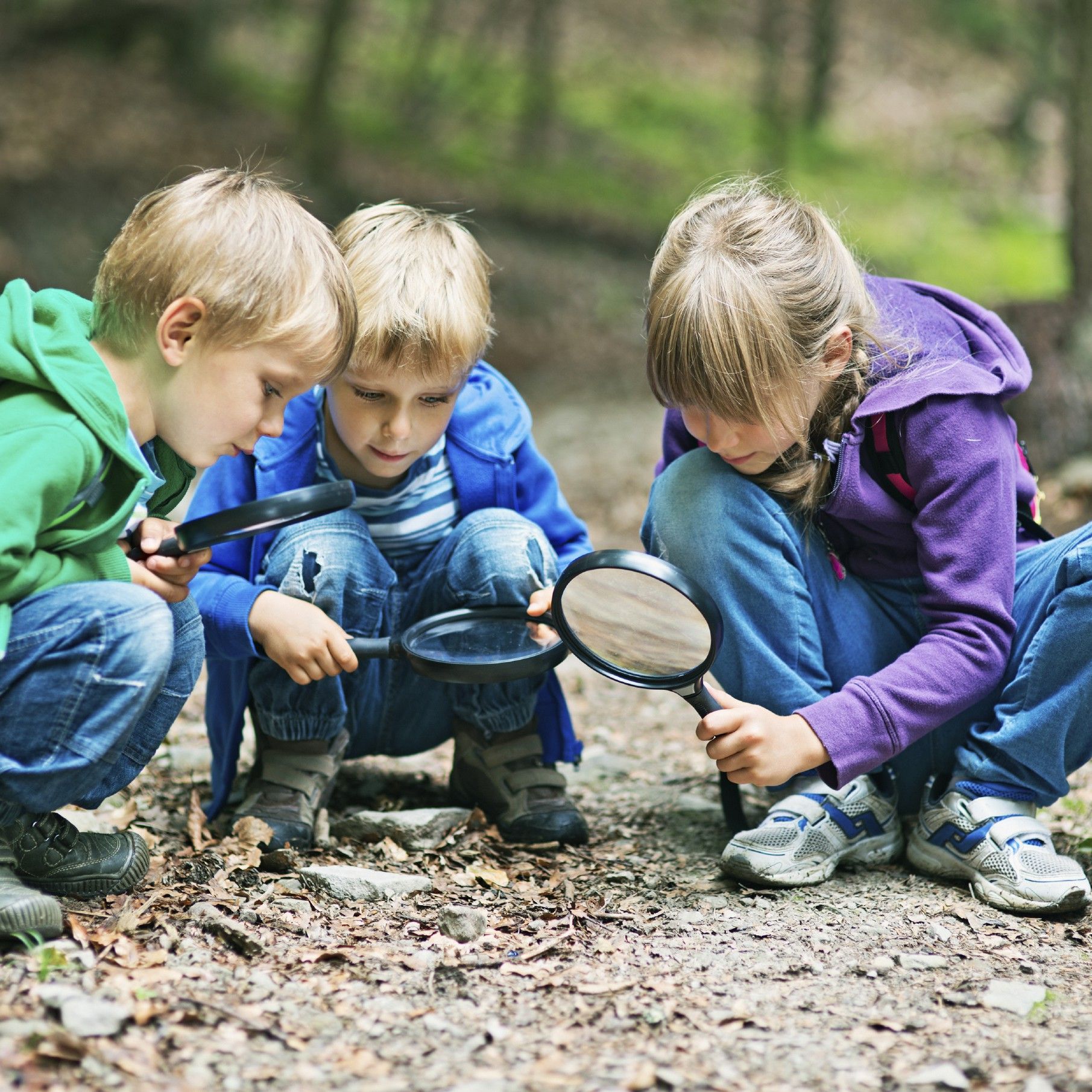
Combining Homeschool & Forest School
Student ID: 209003198 (Joelle Otterstedt)
The current education system in England seems to teach conformity and emphasize test-based learning. It requires students to jump through hoops in order to move forward. This system neglects some of the most important things in a child’s education: individuality, practicality, and independence. Testing to make sure the student is progressing is an important aspect of school, however, testing should not be the primary goal of schooling. The problem with the current system is that passing a test is the main goal. The focus of education should be on developing a learner that is independent, excited to learn, and curious about the world around them.
The education system described above is what is most common in England, however, there are alternatives that some parents choose for schooling their children. Two common alternatives are homeschooling and forest schools.
Homeschooling is one  of the most common education alternatives, and the
of the most common education alternatives, and the
number of children that are being homeschooled is increasing throughout the United Kingdom (Ray, 2020). There are many different types of homeschool. For example, unschooling is very individualistic and focused on experiential and activity-based learning. In contrast, the “classical method” of homeschool interweaves all of the subject areas into a chronological reading plan so students are studying various subjects historically. The most common type of home schooling is called School-At-Home or “Traditional” homeschool. In this method, kids follow a strict curriculum, often the same curriculum implemented in local schools (Staff Writers, 2019).
Some people believe that homeschooling causes children to miss out on valuable social interaction, which may cause social difficulties in their future. Despite the negative connotations surrounding children who are homeschooled, there are positives that result from being homeschooled. Studies show that homeschooled children generally score better on tests than students that attend traditional primary school. In 2014, there was a study done on SAT scores of college-bound seniors. It was found that the 13,549 homeschoolers SAT scores were 0.61 standard deviation higher in reading, 0.26 standard deviation higher in mathematics, and 0.42 standard deviation higher in writing than the scores of all college bound seniors (Ray, 2016). This shows that the test scores of home-school students are higher than the national average. This is most likely because homeschoolers education is more individualized. The student can progress at their own pace and thus are able to learn the material better.

Forest schools are based on a Scandinavian approach to teaching, which highlights the importance of children having interactions with nature. In the last 15 years, forest schools have become more popular in Britain (O’Brien, L., 2007). Normally, students are sent to forest schools once a week. Their lessons are run by qualified forest school leaders and are assisted by the teachers. There are a wide range of activities that take place at forest schools, but the lessons can be linked to the national curriculum and foundational stage objectives. It has been found that children who play in the natural environment have more creative, diverse, explorative, and imaginative play (O’Brien & Murray, 2007).

Both home schools and forest schools have valuable components that traditional British schools lack. Home schools allow for individualization and independence. Forest school allows students to learn about the world around them through hands-on experiences. By combining these two types of schooling, students gain the benefits from both approaches. The alternative being proposed is a combination of home school and forest school.
How It Will Work
In this alternative for primary education, there would still be one teacher for about 20 to 30 children. On Monday, Wednesday, and Friday, the children would be doing home school. The home school days in this model would follow a similar approach to the “Traditional model” mentioned above. During the first two years, it would include direction from the parents. The teachers would use the national curriculum to come up with daily lesson plans. The parents would use these lesson plans to individually guide their children through the planned learning experiences. If the parents work, this could be done around their work schedule. For example, if the child was at day care during the day, the parent could teach them their daily lessons in the afternoon or evening. For the third year, the kids would start the transition to online learning. During this year, two days a week the children would be taught by their parents, but on the third day, they would do online learning. The following year, lessons would be online two days a week, while the third was still led by a parent. By the fifth year, they will have worked up to doing all online lessons. There will be tests occasionally over the materials that the students should be learning, however, these are just for the teacher and parents to see how the child is progressing.
For online learning, teachers would create lessons to do online and the students would work through them at home at the pace that is best for them. The students would be expected to work on each subject for a certain amount of time per day. This allows students that are more advanced to learn more about a topic, without pushing other students in the class too far. When the students choose to work on each lesson is flexible. It doesn’t matter what time of day the lessons are worked on, as long as they complete the amount of time assigned by the teacher. This allows students to take breaks to play, get outdoors, and eat whenever they feel it is necessary. The curriculum would include the standard subjects taught in primary education, but it would also include a free subject. During the free period, students are expected to pick a topic they are interested in and learn about it. It allows them the freedom to learn what they want and how they want. They could use books, computers, or even just talking to adults to learn about a new subject.
On Tuesday and Thursdays the students will be attending forest school. This is when learning takes place in a natural environment. Students will meet up with their teacher and the other students in their class. Meeting with the same people every time will allow them to make bonds and connections with their peers. Teachers will use the environment around them to teach some lessons that are common in schools today. For example, instead of using colored papers, they will use flowers or leaves to teach young children colors. As they progress through school, the lessons will become more advanced, but they can still be done in the outdoors. For example, rocks, sticks, or leaves could be used to teach children addition, subtraction, multiplication, and division. This will allow students to learn colors and math like children are in traditional schools, but it also gives them the opportunity to interact with the environment around them. There will also be lessons specific to learning about the outdoors. This could include many Earth science topics, such as learning about the rocks, plants, and animals in the area they live in. As global warming is becoming a bigger issue, it is becoming more important to teach younger generations about the environment and how to take care of it. They will also learn valuable life skills, such as teamwork. One common activity is to make a shelter together out of what they can find in their surroundings (O’Brien & Murray, 2007).
Homeschooling and Forest Schools both have valuable components that are left out of traditional primary schools. However, each of these alternatives are extreme and cause them to primarily only have one type of learning occur. By combining these two approaches to learning, the child will get the positives of both types of educational alternatives. From the homeschooling aspect, they will get the opportunity to move at their own pace and learn to work independently. From the forest schools, they will learn from hands-on experiences. Children will also get opportunities to have social interaction with people their age.
Implementing this alternative education would take time. It is drastically different from the current public system and slightly different from some of the alternatives that already exist. Since it is so drastically different, the state would not immediately switch to this system. The combination of homeschooling and forest schools would have to start off as an alternative for a small portion of the population, similar to how homeschool is now. As this new alternative gains popularity, the hope is that one day this could replace the public school system. That way, this new alternative that combines individuality, independence, and practicality will be funded by the state and free for everybody.
References
Coleman, R. (2014, November 23). The homeschool math gap: The data. https://responsiblehomeschooling.org/the-homeschool-math-gap/
O’Brien, L. (2007). Learning outdoors: The forest school approach. Education 3-13, 37 (1), 45-60.
O’Brien, L. & Murray, R. (2007). Forest school and its impact in young children: Case studies in Britain. Urban Forestry & Urban Greeting, 6(4), 249-265.
Ray, B. (2016). Homeschool SAT scores for 2014 higher than national average. National Home Education Research Institute. https://www.nheri.org
Ray, B. (2020, March 23). Research Facts On Homeschooling. national Home Education Research Institute. https://www.nheri.org/research-facts-on-homeschooling/
Staff Writers. (2019, November 18). Homeschooling: Which model is right for you? https://thebestschools.org/magazine/homeschool-style-right/